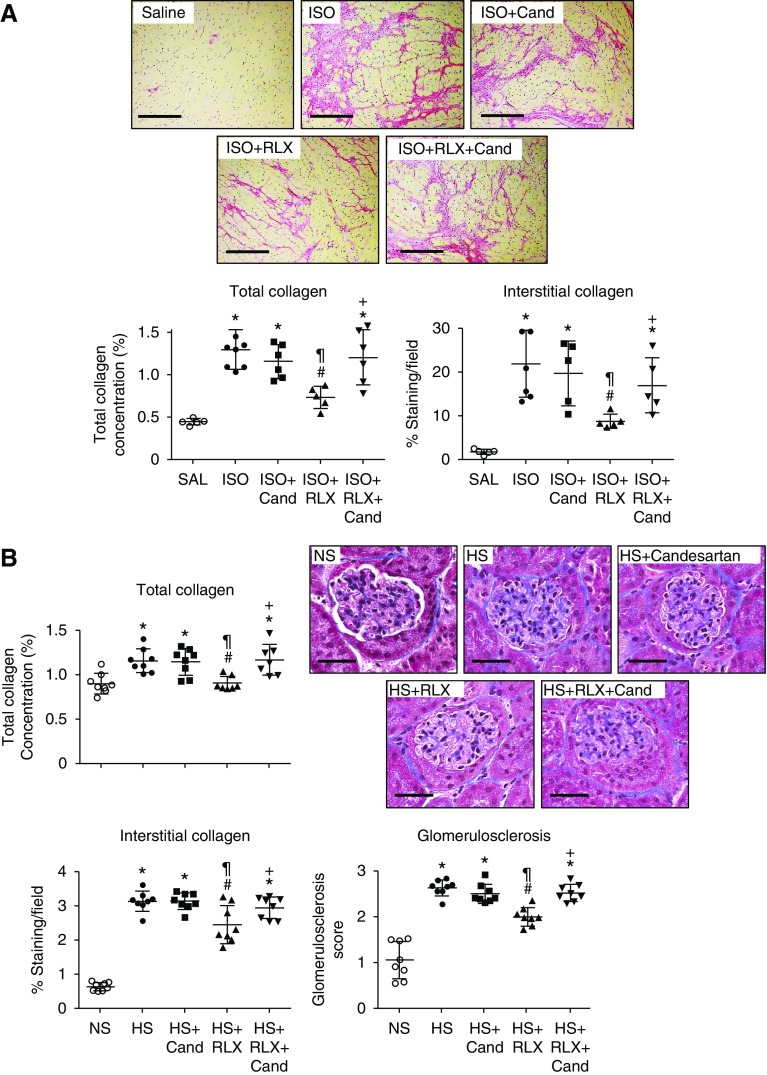Figure 3.
The antifibrotic actions of RLX in the heart of ISO-injured mice and kidneys of HS-fed mice were blocked by the AT1R antagonist candesartan in vivo. (A) Shown is the mean±SEM total left ventricular collagen concentration, representative picrosirius red–stained images of left ventricular interstitial collagen deposition (scale bar, 100 μm), and the mean±SEM picrosirius red–stained left ventricular interstitial collagen deposition (as a percentage of the fractional area) from uninjured male 129sv mice, ISO (25 mg/kg)-injured mice (after 17 days of injury), and ISO-injured mice treated with candesartan cilexetil (0.5 mg/kg per day) alone, RLX (0.5 mg/kg per day) alone, or RLX (0.5 mg/kg per day) and candesartan (0.5 mg/kg per day) throughout the 17 days of ISO-induced injury (from n=7–8 animals per treatment group). (B) Also shown are the mean±SEM total renal collagen concentration, representative Masson trichrome–stained images of renal interstitial collagen deposition (scale bar, 100 μm), and the mean±SEM interstitial renal collagen staining per field (expressed as percent) as well as the mean±SEM glomerulosclerosis score (as assessed by morphometry of Masson trichrome–stained images), from male FVB/N mice fed an HS (5% sodium chloride) diet for 8 weeks and treated from weeks 5 to 8 with candesartan cilexetil (2 mg/kg per day), RLX (0.5mg/kg per day), or both combined (n=7–8 animals per treatment group). *P<0.01 versus uninjured control groups, respectively; #P<0.01 versus ISO- or HS-injured/untreated group, respectively; ¶P<0.01 versus ISO- or HS-injured plus candesartan-treated group, respectively; +P<0.01 versus ISO- or HS-injured plus RLX-treated group, respectively.

